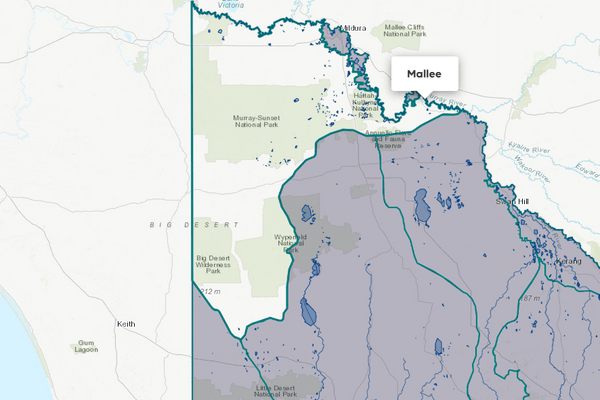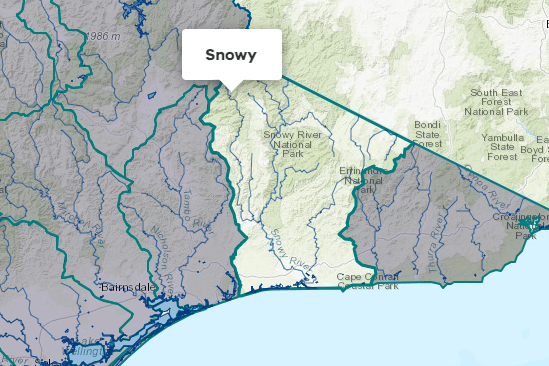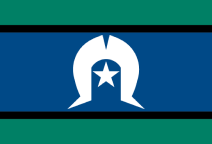About the area
- The Murray River forms most of Victoria’s border with New South Wales. Victoria shares the volume of water held in the major storages with New South Wales under the Murray–Darling Basin Agreement.
- For the purposes of this report, the Murray basin includes the Upper Murray basin and areas in Victoria supplied from the Murray River downstream of Lake Hume.
- There are typically large volumes of water diverted from the river for irrigation use and environmental diversions and flows. Irrigation diversions support significant agricultural production.
More information on water management and accounting is detailed in Water .
2021-22 overview
Available water
Catchment inflow was higher than the previous year.
Licensed diversion restrictions
Fewer restrictions on licensed diversions than the previous year.
Seasonal determinations
Murray system reached 100% allocation to both high- and low-reliability water shares – a higher level than the previous year.
Water use
More water was diverted for consumptive purposes than the previous year.
When compared to the previous year, in 2021-22:
- more rainfall was received and storage levels peaked and declined at higher levels
- catchment inflow was much higher, the highest volume received since 2016-17
- high-reliability entitlements reached 100% allocation earlier
- low-reliability entitlements received an allocation for the first time since 2016-17
- there were fewer restrictions on licensed diversions from unregulated streams
- more water was diverted from the basin for environmental uses.
Climate
Rainfall
In 2021-22, rainfall in the Murray basin was above average in most areas, much higher than the year before. Rainfall was:
- above average in the western and central regions of the Murray basin around Mildura, Swan Hill, and Cobram
- very much above average in the north-east region except around Hotham Heights where rainfall was average.
River basin water balance
In 2021-22, 1,393,596 ML of water was diverted for consumptive uses — town, domestic and stock, irrigation and commercial supply — and for diversions to wetlands for environmental purposes. This was similar to the 1,365,327 ML diverted the previous year.
Water balance table
The table below shows the total volumes of water available and supplied from water resources in the Murray basin in 2021-22. This water balance for the Murray river system includes only the Victorian portion of the Murray resource.
The volumes presented in the water balance may not be consistent with the MDBA’s cap compliance reporting due to different accounting methods.
Table 1: Water balance, Murray basin
Storages
Major — greater than 1,000 ML — on-stream storages in the Murray basin are included in the water balance. Volumes in off-stream storages are presented for additional information about the resource condition.
Storage levels
Storage levels in the Murray basin were 97% on 30 June 2022.
Higher than the previous year
On 30 June 2021 storage levels were 60% full.
Table 2: Storage levels, Murray basin
Catchment inflow
Catchment inflow is calculated based on estimates of inflow to major on-stream storages plus inflow from tributaries.
Catchment inflow in the Murray basin is defined as:
- Victoria’s share of inflow to Lake Dartmouth, Lake Hume, Lake Victoria and the Menindee Lakes system
- Victoria’s share of inflow from the Kiewa River
- flow from the Ovens, Goulburn, Campaspe and Loddon rivers and from Broken Creek into the Murray River.
Above average inflow received
Catchment inflow was 132% of the long-term average annual volume of 6,649,300 ML.
Higher than the previous year
Almost double the previous year (71%) and the highest amount received since 2016-17.
Wastewater treatment plants
Water treated at wastewater treatment plants can be used to supplement water available in the basin. Water discharged to waterways from treatment plants is included as an inflow to the water balance.
Information on treatment plants is now reported in the Water Supply local reports for the water corporation responsible for managing the plant.
In this basin, wastewater treatment plants are managed by Coliban , East Gippsland , Goulburn Valley , Lower Murray , and North East .
Small catchment dams
Water harvested, used and lost by small catchment dams (farm dams) is included in the water balance.
Table 3: Small catchment dams, Murray basin
Entitlements and compliance
Entitlements in the Murray basin provide the basis for how water is shared in the basin.
Most entitlements to water in the regulated Murray provide the right to carry over unused allocation to the next season. In the Murray basin, these entitlement holders can carry over unused water up to 100% of their entitlement volume. Water held above entitlement volume is also subject to a risk of spill from major storages: 811,481 ML was written off due to spill events in 2021-22.
Diversions under bulk entitlements are assessed against the Murray-Darling Basin annual cap target for the Murray-Kiewa-Ovens Valley. Details of this assessment are published annually in the MDBA’s cap register and annual water take report.
Since 2019/20, the diversions are also assessed against the annual permitted takes under the Murray-Darling Basin Plan Sustainable Diversion Limit (SDL) compliance reporting which are annually published in the MDBA’s SDL accounts register of take and the Inspector-General of Water Compliance’s SDL compliance statement.
Entitlement volumes
Rights to water in the Murray basin are shown in table 4 below.
Entitlement volumes represent a maximum volume that can be taken in a one-year period. The volume available in a particular year is dependent on the rules for allocating water set out in the entitlement and the seasonal conditions in that year, which varies. The rules for allocating water under an entitlement can differ between entitlements and systems. This affects the ability and likelihood of water being taken in a particular year.
Table 4: Annual entitlement volumes at 30 June, Murray basin
Available water and take under entitlements
Total water available under entitlements represents the volume of water that was available to be taken by entitlement holders in 2021-22. The volume includes carryover from the previous year, seasonal allocations and net trade into the basin.
Water available under entitlements
There was 2,459,697 ML made available under entitlements in 2021-22. This is similar to the volume available the previous year (2,275,610 ML).
Water taken under entitlements
There was 1,484,984 ML taken under entitlements in 2021-22, similar to the year before (1,396,910 ML).
Seasonal allocations
- High-reliability entitlement allocations opened at 21% and reached 100% in October 2021 (5 months earlier than the previous year).
- Low-reliability entitlements reached 100% in February 2022. This is the first low-reliability seasonal determination in the Murray system since 2016-17.
Restrictions on licensed diversions from unregulated rivers
- There were no restrictions on licensed diversions from unregulated streams in 2021-22. This is lower than the previous year when there was a peak of seven streams on restrictions in February 2021.
Available water and take table
This table shows the volume of available water and the volume taken under entitlements in 2021-22.
More information on available water and take has been detailed in the How do we account for surface section on the How do we account for water page.
In 2021-22, more water was available and taken under entitlements than the previous year.
Table 5: Available water and take, Murray basin
Compliance
Compliance against water entitlements is reported for this basin in three areas:
- entitlement issued: the volume of entitlements issued in a basin does not exceed formal caps, and has not increased without appropriate approvals
- water taken: the volume of water taken during the year does not exceed the volume considered to be available for consumptive and/or in-stream use during that year
- bulk entitlement provisions: holders of entitlements do not breach any provisions that are documented in their bulk entitlement orders.
Total entitlement volume
There was an allowed increase in the total entitlement volume from the previous year (an overall increase of 16,091 ML). See note below.
Total volume diverted
The total volume diverted (1,484,984 ML) was within the volume available for the year (2,459,697 ML).
Individual bulk entitlements
No individual bulk entitlement holder took more than the annual volume made available to them.
Exceptions to compliance
Individual bulk entitlement holders complied with all provisions in their entitlements.
Note to increase in total entitlement volume:
- Water share volume increased by 15,293 ML (HR) and 10,680 ML (LR), this increase was made up of 22,353 ML (HR) and 13,352 ML (LR) issued for the Irrigator Share Distribution, a decrease of 7,180 ML (HR) and 2,719 ML (LR) following surrender of Connections Project Water Shares and another 121 ML (HR) and 48 ML (LR) net increase for other matters including cancellations and conversions from supply by agreements or other systems.
- The supply by agreement volume decreased in line with the water share issue.
- Bulk entitlement volumes similarly changed volumes as a result of the Irrigator share distribution, with loss entitlements decreasing and other changes to unspecified volumes. The loss entitlement was reduced commensurate with the irrigation modernisation works completed and the issue of water shares for the Irrigator Share Distribution and approved by the Minister in line with the Water Act and Water Savings Protocol. More information on the Irrigator share distribution can be found in the Entitlements and Compliance on the statewide surface water page.
Water for the environment
Environmental watering sites
Environmental watering sites in the Murray basin that depend on water for the environment include:
- the Barmah-Millewa Forest, Gunbower Forest, Hattah Lakes and Kerang and Lower Murray Wetlands, which are located along the Murray River and are internationally significant wetlands listed under the Ramsar Convention; except for the Kerang and Lower Murray Wetlands, these are also The Living Murray icon sites
- the Lindsay, Wallpolla and Mulcra islands (also The Living Murray icon sites), which rely on the freshwater inputs from the Murray River to function ecologically.
Environmental water reserve
In 2021-22, water for the environment in the Murray basin comprised:
- Bulk Entitlement (River Murray – Flora and Fauna) Conversion Order 1999 – Flora and Fauna component, comprising 45,267 ML of high-reliability, 8,523 ML of low-reliability and 49,000 ML of unregulated entitlements held by the VEWH
- Bulk Entitlement (River Murray – Flora and Fauna) Conversion Order 1999 – Living Murray, comprising 9,589 ML of high-reliability, 101,850 ML of low-reliability and 34,300 ML of unregulated entitlements held by the VEWH on behalf of the MDBA
- Bulk Entitlement (River Murray – Flora and Fauna) Conversion Order 1999 – Barmah-Millewa Forest Environmental Water Allocation, a significant operational rule embedded in consumptive entitlements comprising 50,000 ML of high-reliability and 25,000 ML of lower security entitlements
- Bulk Entitlement (River Murray – Flora and Fauna) Conversion Order 1999 – River Murray Increased Flows, comprising Victoria’s share of water recovered under the Snowy Water Initiative released from the Snowy Scheme to the River Murray, held by the VEWH
- Environmental Entitlement (River Murray – NVIRP Stage 1) 2012, which is allocated mitigation water for the purposes of watering specific environmental sites that have been identified through Goulburn-Murray Water Connections Project environmental approvals processes (1,207 ML of allocation in 2021-22)
- Bulk Entitlement (River Murray – Snowy Environmental Reserve) Conversion Order 2004, comprising 29,794 ML of high-reliability entitlements, held by the VEWH
- 389,298 ML of high-reliability water shares and 41,837 of ML of low-reliability water shares held for the environment
- water set aside for minimum flows released by the MDBA as a condition of the Murray-Darling Basin Agreement
- water set aside for the environment through flow-sharing arrangements set out in North East Water’s and East Gippsland Water’s bulk entitlements from unregulated rivers
- all other water in the basin not allocated for consumptive uses: this water also provides social, recreational and cultural benefits.
Environmental water use
A total of 757,544 ML of environmental water was delivered in the Victorian Murray system in 2021-22: 607,072 ML of this made its way to the South Australian border.
Management responsibilities
Management of water in the Murray basin is undertaken by various parties.
The MDBA operates the Murray River on behalf of the Victorian, New South Wales and South Australian governments in accordance with the water-sharing arrangements set out in the Murray–Darling Basin Agreement. Under the agreement, Victoria shares the waters of the Murray River with New South Wales and South Australia.
Under normal conditions, Victoria is entitled to a 50% share of all flows upstream of Doctors Point near Albury–Wodonga (that is, flows to Hume and Dartmouth reservoirs and from the Kiewa River), a 50% share of inflows to the Menindee Lakes storage and all flows entering the Murray from the Ovens, Goulburn, Broken, Campaspe and Loddon rivers. Victoria is also required to supply half of South Australia's monthly entitlement flows from the water available to it.
| Authority | Management responsibilities |
|---|---|
| Murray-Darling Basin Authority |
|
| Department of Environment, Land, Water and Planning (Victoria) |
|
| WaterNSW |
|
| South Australian Water Corporation |
|
| Goulburn-Murray Water |
|
| Lower Murray Water |
|
| North East Water |
|
| Goulburn Valley Water |
|
| Coliban Water |
|
| East Gippsland Water |
|
| GWMWater |
|
| North East Catchment Management Authority |
|
| Mallee Catchment Management Authority |
|
| Goulburn Broken Catchment Management Authority |
|
| North Central Catchment Management Authority |
|
| Water supply system | 2021-22 (ML) | 2020-21 (ML) |
|---|---|---|
| Barmah | 46 | 47 |
| Bellbridge | 58 | 50 |
| Cobram system | 2,570 | 2,776 |
| Cohuna system | 552 | 764 |
| Corryong system | 253 | 289 |
| Dartmouth | 20 | 24 |
| Echuca | 3,504 | 3,344 |
| Eskdale | 12 | 13 |
| Gunbower | 56 | 72 |
| Katamatite | 58 | 59 |
| Kerang | 1,084 | 1,064 |
| Koondrook | 250 | 244 |
| Leitchville | 258 | 222 |
| Mildura system | 13,400 | 13,301 |
| Murrabit | 36 | 33 |
| Mystic Park | 11 | 13 |
| Nathalia | 562 | 494 |
| Numurkah system | 883 | 1,036 |
| Omeo | 44 | 48 |
| Piangil | 149 | 138 |
| Picola | 11 | 16 |
| Red Cliffs | 1,363 | 1,353 |
| Robinvale | 576 | 595 |
| Rutherglen/Wahgunyah system | 619 | 675 |
| Swan Hill system | 3,873 | 3,886 |
| Tallangatta | 147 | 152 |
| Walwa | 15 | 15 |
| Wodonga system | 6,257 | 6,724 |
| Yarrawonga system | 1,305 | 1,516 |
| Water supply system | 2021-22 (ML) | 2020-21 (ML) |
|---|---|---|
| First Mildura Irrigation District | 34,156 | 36,160 |
| Merbein Irrigation District | 17,986 | 18,047 |
| Murray Valley Irrigation Area | 190,388 | 185,390 |
| Nyah Irrigation Area | 5,158 | 5,638 |
| Red Cliffs Irrigation District | 32,234 | 32,082 |
| Robinvale Irrigation District | 18,124 | 20,032 |
| Torrumbarry Irrigation Area | 533,288 | 520,833 |






